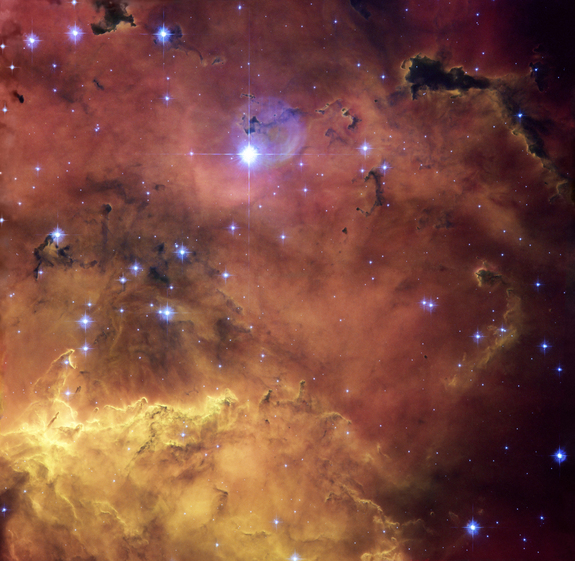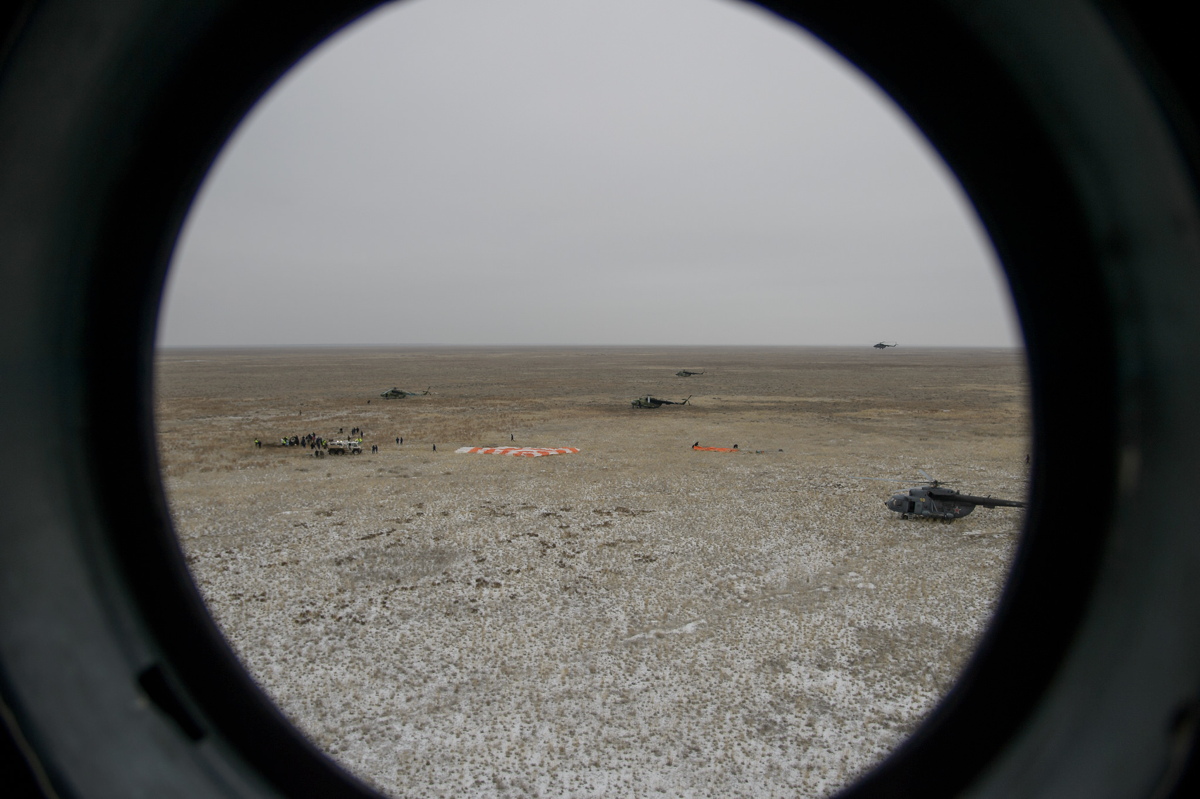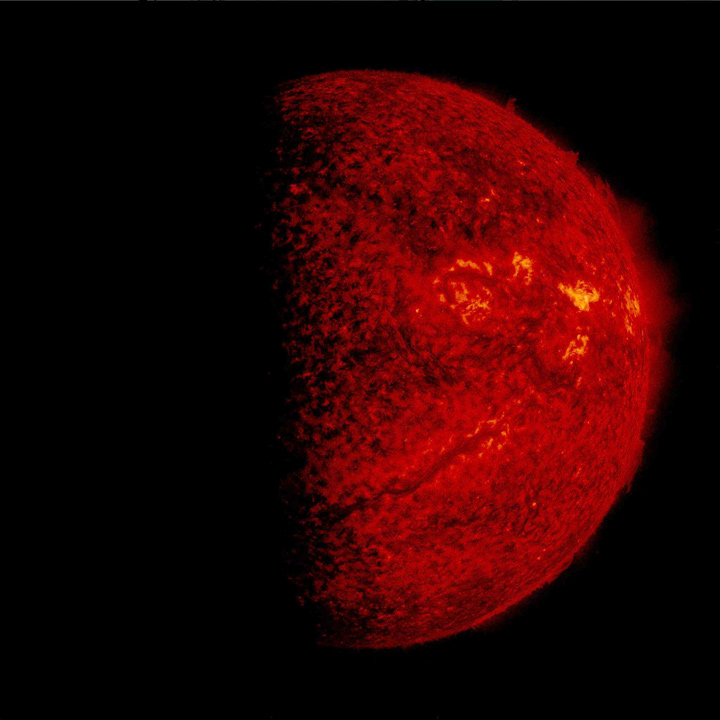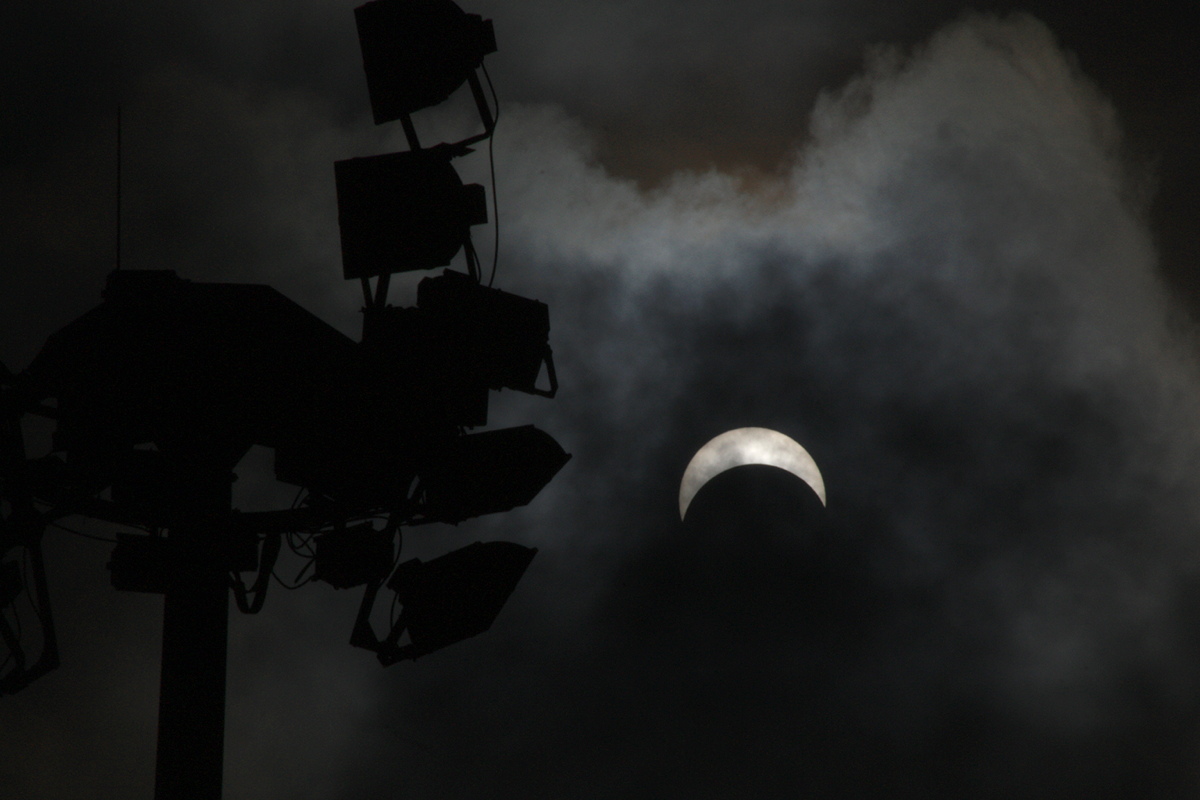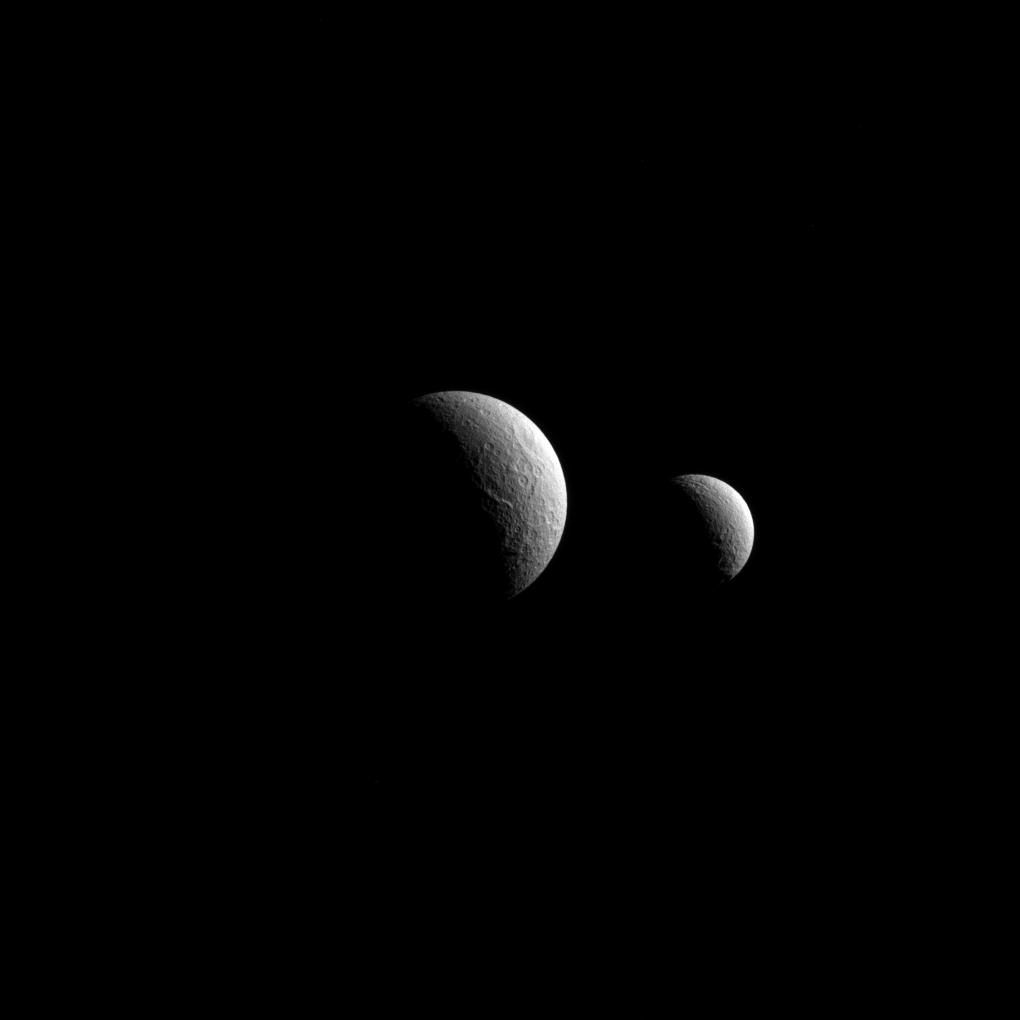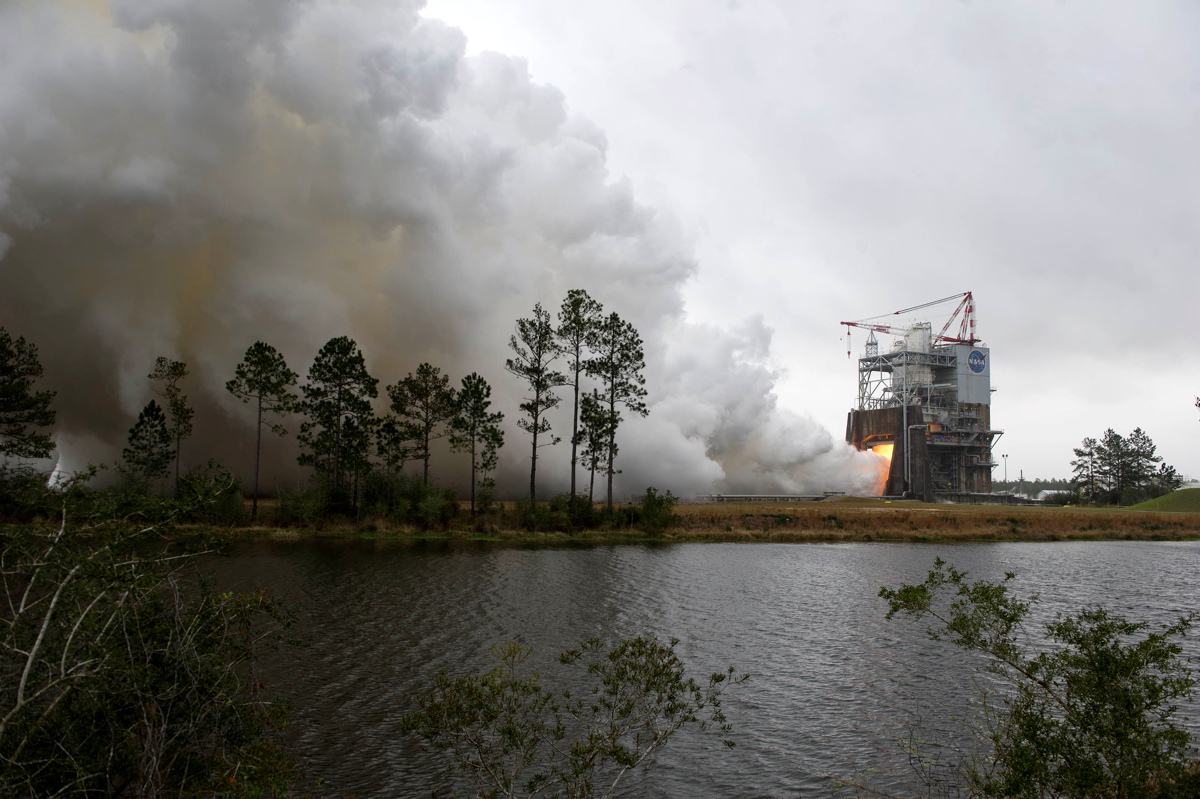Space Image of the Day Gallery (March 2016)
Image of the Day Archives
For older Image of the Day pictures, please visit the Image of the Day archives. Pictured: NGC 2467.
Starlight
Tuesday, March 1, 2016: An emission-line star known as IRAS 12196-6300, seen at the center of this image, lies nearly 2300 light-years from Earth. The star’s light, when dispersed into a spectrum, shows emission lines, a rainbow of colors marked with dark and bright lines. This spectrum can be compared to the emission spectra of atoms and molecules to determine the star’s chemical composition. IRAS 12196-6300 has been born recently, being under 10 million years old. Reflection nebulas seen above and below the star glow with reflected starlight, and arise from the dusty material remaining from IRAS 12196-6300’s formation. Image released Feb. 29, 2016.
— Tom Chao
Soft Landing
Wednesday, March 2, 2016: The Soyuz TMA-18M spacecraft landing site in Kazakhstan appears through the window of an arriving Russian MI-8 helicopter on March 2, 2016 (Kazakh time). The space capsule carried Expedition 46 Commander Scott Kelly of NASA and Russian cosmonauts Mikhail Kornienko and Sergey Volkov of Roscosmos back from the orbiting International Space Station. Kelly and Kornienko were returning from their record year-long mission in space. [See our full story.]
— Tom Chao
Eerie Light
Thursday, March 3, 2016: Astrophotographer Jack Suman captured the zodiacal light in Saguaro National Park near Tucson, Arizona, on Feb. 27, 2016, about an hour after sunset. He writes in an email message to Space.com: “The eerie light was visible for about 30 minutes.” Zodiacal light, usually very faint, arises from sunlight reflecting from space dust scattered in the plane of the ecliptic, the apparent path of the sun in our sky.
— Tom Chao
Sun Block
Friday, March 4, 2016: The Solar Dynamic Observatory's orbit periodically causes its view of the sun to be blocked by the Earth (and also sometimes the moon), as seen in this still from a video taken on Feb. 22, 2016. The eclipse season takes place twice in a year, close to the equinoxes. The sun was blocked for almost an hour that day, and this image shows the sun gradually reappearing from behind the Earth.
— Tom Chao
Crab Walk
Monday, March 7, 2016: The Crab Pulsar glows with many colors in this image by the Caltech HIgh-speed Multi-color camERA (CHIMERA), an instrument on the Hale telescope at the Palomar Observatory, operated by the California Institute of Technology. This pulsar has arisen from the final life stage of a star whose mass collapsed. It weighs as much as our sun, but rotates 32 times per second. The instrument made a zoomed-in 300-second exposure of the pulsar to produce a color image. CHIMERA recorded the pulsar very quickly, then imaged the remainder of the scene slowly. Image released March 3, 2016.
— Tom Chao
Put on the Brakes
Tuesday, March 8, 2016: The Milky Way glows over ESO's La Silla Observatory in Chile. The ESO 3.6-meter telescope looms up on the central pedestal, incorporating the High Accuracy Radial velocity Planet Searcher (HARPS), the best finder of exoplanets available on planet Earth. The small dome next to the main one formerly contained the Coudé Auxiliary Telescope. Below the pedestal stands the French Rapid Action Telescope for Transient Objects (TAROT). In the distance to the right, the decommissioned Swedish–ESO Submillimetre Telescope (SEST) is visible. The location is so dark that a single car’s brake lights at left can produce quite striking illumination. Image released March 7, 2016.
— Tom Chao
Breaking space news, the latest updates on rocket launches, skywatching events and more!
Look Deep
Wednesday, March 9, 2016: An image by NASA/ESA Hubble Space Telescope shows thousands of galaxies in space. A few stars of our own galaxy, the Milky Way, also appear in the foreground. Hubble’s Wide Field Camera 3 (WFC3) been examining the giant galaxy cluster Abell 2744 which lies near this region, while simultaneously its Advanced Camera for Surveys (ACS) has been examining this “parallel” field. Containing numerous galaxies of various ages, shapes and sizes, this parallel field observation will delve nearly as deep as the Hubble Ultra-Deep Field. Image releaed March 7, 2016.
— Tom Chao
Solar Eclipse Seen in Singapore
Thursday, March 10, 2016: Astrophotographer Akash Anandh employed a telescope at the National University of Singapore to take one photo of the solar eclipse, but for this shot he tells Space.com in an email message that he used a 75-300mm telephoto lens. Image taken March 8, 2016.
— Tom Chao
Two Sisters
Friday, March 11, 2016: Saturn's Moon Tethys (left) and Rhea float in the blackness of space, as seen by Cassini spacecraft. Giovanni Cassini, for whom the spacecraft is named, discovered both of these moons, named for two Titans, sisters in Greek mythology. Rhea stretches 949 miles (1,527 kilometers) across, and Tethys measures 660 miles (1,062 kilometers) across. Being medium in size, they possess enough material, mostly ice, to have pulled themselves into rough spheres. The view shows the anti-Saturn sides of Tethys and Rhea. Despite appearing close together from this angle, Tethys was about 220,000 miles (360,000 kilometers) farther away from Cassini, nearly the distance from Earth to our moon, so the relative sizes of the bodies is not depicted accurately here. Cassini spacecraft captured the sight in visible red light with its narrow-angle camera on Oct. 11, 2015.
— Tom Chao
Hot Fire
Monday, March 14, 2016: NASA carried out a successful test firing of the first deep space RS-25 rocket engine for 500 seconds on March 10, 2016, at Stennis Space Center in Mississippi. Rocket engine No. 2059 will evenually be used on the Space Launch System to carry humans on deep-space missions, include journeys to an asteroid and Mars. Aerojet Rocketdyne is the prime contractor for RS-25 engine work.
— Tom Chao
